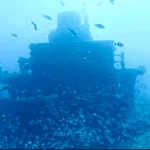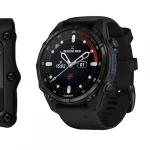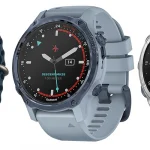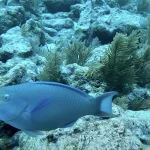Choosing the Perfect Dive Sites for Beginners
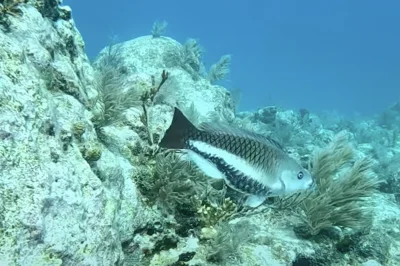
Table of Contents
- Choosing the Perfect Dive Sites for Beginners
- Understanding Key West’s Diving Trends
- Common Mistakes Beginners Make and How to Avoid Them
- Essential Gear: Renting or Buying for Your Dive
- Mastering the Art of Buoyancy Control
- Myths About Scuba Diving in Key West: Debunked
- A Day in the Life of a Dive Tour in Key West
- Planning Your Diving Adventure: Key Factors
Introduction
Key West is a diver’s paradise, offering vibrant reefs, clear waters, and structured programmes perfect for beginners. With the right preparation and mindset, first-time divers can experience the magic of the underwater world. This guide covers choosing the best dive sites to avoiding common pitfalls, helping you dive into Key West’s wonders with confidence.
Choosing the Perfect Dive Sites for Beginners
Understanding Key West’s Diving Trends
In 2025, Key West continues to evolve as a premier diving destination with a strong focus on eco-friendly initiatives. Operators promote sustainable practices, emphasising minimal disturbance to coral reefs. The Florida Keys National Marine Sanctuary, protecting extensive coral reefs, underscores the importance of environmental stewardship.
Advanced dive technology such as AI-driven computers and marine species recognition masks enhances safety and environmental awareness among divers. The demographic is increasingly young divers from Gen Z and Millennials who value sustainability alongside adventure. Dive packages now include specialty courses, combining exploration and education.
Overall, Key West leads sustainable dive tourism with innovative technology and demographic trends, making it a conscientious diving destination.
Understanding Key West’s Diving Trends
Common Mistakes Beginners Make and How to Avoid Them
First-time divers in Key West can make mistakes affecting safety and enjoyment. Recognising these enhances confidence and protects marine environments.
Pre-Dive Preparation Pitfalls
- Skipping the Buddy Check (BWRAF): Always conduct thorough checks of equipment before diving to prevent malfunctions.
- Ignoring Local Water Conditions: Research currents and visibility to avoid unexpected challenges.
In-Water Technique Errors
- Incorrect Weighting: Over- or underweighting affects descent control. Perform a surface weighting test to ensure balance.
- Poor Ear Equalisation: Equalise pressure early and frequently using techniques like the Valsalva manoeuvre to avoid discomfort.
- Rapid or Unsafe Ascents: Ascend slowly and always perform a safety stop to minimise decompression risks.
- Breath-Holding: Never hold your breath to prevent lung injuries; maintain steady breathing throughout the dive.
Environmental Awareness and Post-Dive Considerations
- Disturbing Coral Reefs: Maintain neutral buoyancy and use gentle kicks to protect reefs.
- Ignoring Buddy Protocols: Stay close to your buddy and keep communication clear during dives.
- Neglecting Weather and Sea Conditions: Monitor conditions and be prepared to adjust or cancel dives if needed.
By addressing these mistakes, beginners can safely enjoy the breathtaking underwater world that Key West offers.
Common Mistakes Beginners Make and How to Avoid Them
Renting Scuba Gear in Key West
Benefits
- Cost-effective for infrequent divers: Renting is affordable for those who dive occasionally.
- Convenience: Avoid carrying bulky equipment, with local shops providing necessary gear.
- Backup Availability: Shops offer spare gear, reducing dive cancellations due to equipment issues.
- Modern Equipment Access: Use up-to-date equipment without purchasing it.
Drawbacks
- Fit and Comfort: Rental gear may not fit perfectly, reducing dive quality.
- Gear Condition Variability: Maintenance standards vary across rental shops.
- Less Personalized Experience: Renting lacks the familiarity of personal equipment.
Buying Scuba Gear in Key West
Benefits
- Custom Fit: Personal gear provides precise fitting, enhancing comfort and efficiency.
- Reliability: Familiarity with your own gear increases safety and reduces surprises.
- Cost-effective for Frequent Divers: Purchasing gear is economical for regular divers.
- Improved Learning: Consistent use of personal gear aids skill retention.
Drawbacks
- Higher Initial Investment: Quality gear requires significant upfront cost.
- Maintenance Responsibility: Owning gear means dedicating time to clean and store it.
- Transport Logistics: Carrying your gear involves managing extra baggage.
Summary Comparison
| Factor | Renting | Buying |
|---|---|---|
| Cost | Lower upfront; cost adds over multiple dives, best for occasional divers | Higher initial expense; economical long-term for frequent divers |
| Fit & Comfort | Varies; may be ill-fitting or worn | Custom fit tailored to individual preferences |
| Convenience | No packing or transport; gear ready upon arrival | Must transport and maintain equipment personally |
| Reliability | Dependent on rental shop maintenance | Full control and familiarity with gear condition |
Renting gear is practical for infrequent divers, while regular visitors or extended stays benefit from buying locally for consistent fit and performance.
Essential Gear: Renting or Buying for Your Dive
Mastering the Art of Buoyancy Control
Controlling buoyancy is essential in Key West, where vibrant reefs and occasional currents require precision to protect marine life and enhance dive efficiency. Focus on integrating equipment management, breathing techniques, body positioning, and ongoing practice.
Step-by-Step Guide to Perfect Buoyancy
- Equipment Preparation: Ensure all gear functions perfectly at the surface without excess effort.
- Breath Control: Use slow, deep diaphragmatic breaths to subtly adjust your position underwater.
- Utilise Your BCD: Make controlled adjustments without rapid air changes to maintain balance.
- Maintain Horizontal Trim: Streamlined positioning conserves energy and controls movement.
- Perfect Hovering: Practice maintaining position without drifting, crucial for reef conservation.
- Adapt to Conditions: Adjust for local environmental factors like current and depth.
- Advanced Training: Specialty courses such as PADI Peak Performance Buoyancy refine buoyancy skills.
Additional Tips for Key West Diving
- Be patient with BCD adjustments; wait to observe effects before further action.
- Focus on breath control to minimise constant weight changes.
- Maintain environmental responsibility by keeping a distance from reefs.
- Test gear regularly for assurance in buoyancy and comfort throughout dives.
By following these guidelines and frequently practising in Key West, divers will master buoyancy for safer, more enriching, and environmentally friendly dives.
My Favorite Dive Computers
I have compared the 3 top diving computers for each category to help making the right choice easier:
Mastering the Art of Buoyancy Control
Debunking Common Misconceptions About Scuba Diving in Key West
Scuba diving in Key West is often surrounded by myths that may mislead newcomers. Clarifying these misconceptions helps ensure a safe and enjoyable diving experience.
Equipment and Financial Myths
Myth: Starting scuba diving requires a significant investment in equipment.
Reality: Most beginners rent equipment from dive shops, reducing initial costs, and gradually purchase personal items like masks or fins.
Myth: Modern scuba gear eliminates all risks.
Reality: Despite reliable equipment, diving safety largely depends on human factors. Proper maintenance and adherence to protocols are essential.
Physical and Skill-Based Misconceptions
Myth: You must be an expert swimmer or exceptionally fit to dive.
Reality: Basic swimming skills are sufficient for recreational diving. Dive courses teach necessary techniques for safe diving.
Myth: Running out of air is unavoidable.
Reality: Divers are trained for air management, using techniques like pressure gauges and the “rule of thirds” to ensure safety.
Depth and Safety Misconceptions
Myth: Recreational diving is limited to shallow depths.
Reality: Dive computers and larger tanks support safe management of various depths, aligning with divers’ experience and certification.
Myth: Diving is inherently dangerous.
Reality: Diving fatalities are notably low, safer than many recreational activities. Proper training and following safety guidelines minimise risks.
Key West-Specific Myths
Myth: Equalising ear pressure is automatic and easy.
Reality: Ear equalisation requires deliberate technique—crucial in Key West to avoid discomfort or injury.
Myth: Scuba diving in Key West is exclusive to young and elite divers.
Reality: Diving is accessible to all ages and backgrounds, with training programmes accommodating varied skill levels.
Understanding these truths fosters a safer, more enjoyable diving experience in Key West’s vibrant underwater world.
Myths About Scuba Diving in Key West: Debunked
Morning Pool Instruction
The day begins with a focused two-hour pool session for beginners. This controlled environment helps new divers become comfortable with essential skills, including equipment use, breathing techniques, and safety protocols, ensuring they are prepared for open water experiences.
Lunch Break
A one to one-and-a-half hour lunch break follows the pool session, allowing divers to relax and prepare for the adventure ahead. Bringing snacks or visiting local eateries is recommended.
Afternoon Reef Dives
In the afternoon, a dive boat takes divers to beginner-friendly reef sites. These sites offer clear visibility and abundant marine life, providing a safe introduction to Key West’s underwater ecosystem under experienced instructors’ guidance.
Typical Schedule
| Time | Activity |
|---|---|
| 9:00 AM | Check-in and pool instruction begins (2 hours) |
| 11:30 AM | Lunch break |
| 1:00 PM | Transfer to boat and 20-minute ride to reef sites |
| Afternoon | Two guided shallow reef dives (approximately 1 to 1.5 hours total) |
| Late afternoon | Return to shore and course completion (total ~7.5 hours) |
Note that specific start times can vary depending on the operator, with common options being 8:00 AM or 9:30 AM departures.
Key Features & Preparation Tips
- Equipment Provided: All scuba gear is supplied by the dive operator, eliminating the need for personal equipment.
- Health & Safety: Basic health screening is conducted before diving, and it’s advised not to fly within 24 hours post-dive.
- Non-Certification Experience: This tour is introductory, ideal for non-certified divers; further training is needed for official certification.
- What to Bring: Swimsuit, reef-safe sunscreen, towel, and a dry bag are recommended.
This structured approach allows beginners to safely enjoy Key West’s reef ecosystems in a day.
A Day in the Life of a Dive Tour in Key West
Planning Your Diving Adventure: Key Factors
When planning your diving trip to Key West, consider timing, weather, and local guidelines to ensure a safe, memorable experience.
Timing Considerations
The ideal months for diving in Key West are between May and October. Water temperatures are warm, visibility high, and marine life active. However, be mindful of the hurricane season from August to October, as weather can affect diving conditions. The mini-lobster season in late July can lead to increased activity around dive sites.
Weather and Water Conditions
Key West generally offers good diving weather, though conditions vary:
- Calm seas and excellent visibility are prevalent from late spring through early fall.
- Cooler, choppy seas occur during winter months (November to April).
Always check daily weather and sea conditions ahead of dives, as local operators may adjust sites for safety.
Local Regulations and Best Practices
Local authorities manage diving regulations to protect ecosystems and ensure safety. Key guidelines include:
- Dive with a buddy: Enhances preparedness and support.
- Respect marine life: Avoid disturbing corals and animals.
- Adhere to seasonal restrictions: Some areas may have closures during certain periods.
Familiarise yourself with dive profiles, emergency procedures, and any gear or certification requirements to ensure a smooth experience.
By planning around these factors, you can maximise your diving adventure in Key West’s breathtaking waters.
Planning Your Diving Adventure: Key Factors
Essential Scuba Diving Gear for Beginners in Key West
For beginners diving Key West’s reefs, choosing the right gear is key for safety and comfort. The area’s warm waters favour lightweight, travel-friendly equipment that simplifies the experience.
Key Equipment for Beginners
- Dive Computer: Devices like the Shearwater Perdix 2 offer intuitive controls and real-time alerts, aiding orientation underwater.
- BCD (Buoyancy Control Device): Lightweight options such as the Cressi Travelight are favoured for ease and functionality.
- Regulator: Trustworthy setups like the Scubapro MK11/C370 ensure safe breathing.
- Mask and Snorkel: Secure, clear sight underwater is crucial; models like the Cressi Big Eyes Evolution are popular.
- Fins: Choose efficient fins like the Mares Avanti Quattro Plus for controlled propulsion.
- Wetsuit (Optional): A thin wetsuit adds comfort, especially for divers sensitive to cooler temperatures.
Practical Tips for Equipment Use in Key West
- Rent Before You Invest: Consider rental options before purchasing, prioritising personal masks for comfort.
- Lightweight Travel: Select portable, modular gear for ease of transport and packing.
- Wireless Tech: Reduce bulk with wireless transmitters, simplifying your underwater setup.
By selecting equipment for ease and reliability, new divers can fully enjoy Key West’s underwater world without hindrance.
Sources
- Florida Scuba Diving – The Advanced Diver’s Bucket List: 5 Key West Experiences That Will Challenge Even Experts
- Dive Curacao – Eco-Dive Tourism and Its Growing Appeal
- Key West Scuba Diving Official Website
- Accio – Scuba Diving Industry Trends in 2025
- Florida Scuba Diving – Key West Dive Gear Rental Price Comparison 2025
- SmacoDive – 10 Scuba Diving Mistakes Beginners Make
- Dive Right In Scuba – Rookie No More: Conquering Common Beginner Scuba Mistakes
- Lost Reef Adventures – 10 Essential Tips for Diving Safely

